As the automotive industry progresses towards electrification, two standout models from Volkswagen Group have emerged as strong contenders in the electric vehicle market: the Skoda Enyaq and the VW ID. Buzz Transporter. Both vehicles embody the ethos of sustainability while catering to different segments, offering unique features and innovations. This comparison will delve into their specifications and innovations, providing an insightful overview for potential buyers.
Skoda Enyaq vs VW ID. Buzz Cargo – Differences & prices compared
Both models have their strengths – but which one suits you more?
Compare performance, efficiency, price and space directly: Skoda Enyaq or VW ID. Buzz Cargo?
Design and Dimensions
The Skoda Enyaq is an all-electric SUV that combines modern aesthetics with functionality. It stands at a length of 4649 mm and a width of 1879 mm, providing ample interior space for passengers and cargo alike. The Enyaq's height measures 1621 mm, giving it a robust stance on the road. In contrast, the VW ID. Buzz Transporter, a cargo van with a nostalgic nod to the classic VW Bus, is slightly longer at 4712 mm but measures wider at 1985 mm and considerably taller at 1932 mm. This design facilitates a spacious cabin, making it ideal for both transport and leisure applications.
Powertrain and Performance
Both vehicles feature electric powertrains that emphasize efficiency and performance. The Skoda Enyaq offers two power outputs, with a maximum of 340 HP and torque reaching 679 Nm. In terms of acceleration, it can sprint from 0-100 km/h in as little as 5.5 seconds, with a top speed of 180 km/h. On the other hand, the VW ID. Buzz Transporter also offers power outputs of up to 340 HP but comes with a lower maximum speed of 160 km/h. With a torque of 679 Nm, the ID. Buzz provides a smooth driving experience. While both vehicles share a similar driving configuration of either rear-wheel or all-wheel drive, the Enyaq promises a more exhilarating ride, particularly with its acceleration capabilities.
Battery Capacity and Electric Range
Battery technology is a critical factor for electric vehicles, and both the Skoda Enyaq and VW ID. Buzz Transporter come equipped with impressive battery capacities. The Enyaq houses a robust 77 kWh battery that delivers a remarkable electric range of up to 573 km on a single charge, depending on driving conditions. This substantial range makes it an excellent option for long-distance travel.
In comparison, the ID. Buzz Transporter features a slightly smaller 79 kWh battery for its higher variant but also offers a lower range of 461 km. However, the ID. Buzz’s larger battery is crucial for its utility as a cargo van, allowing for longer operational hours before needing a recharge. The slower charging rate of up to 19.2 kWh per 100 km, compared to the Enyaq, is something potential users must consider based on their usage scenarios.
Interior and Cargo Capacity
When it comes to interior space, both models are designed with practicality in mind. The Skoda Enyaq comfortably seats five passengers, with trunk capacities ranging from 570 to 585 liters, depending on the configuration. This spaciousness makes it a versatile choice for families and businesses alike.
The ID. Buzz Transporter, designed as a cargo vehicle, seats three and focuses heavily on utility. It offers a commendable payload capacity of 753 kg, making it perfect for commercial use. While its iteration sacrifices some passenger space for cargo, the trade-off caters to an audience prioritizing freight capabilities.
Innovative Technologies
Skoda has equipped the Enyaq with a host of advanced technologies focused on enhancing the driving experience. Features such as an advanced infotainment system integrate seamlessly with mobile devices, supporting connectivity and navigation for an intuitive user experience. Additionally, it offers multiple driver-assistance systems to promote safety and ease of handling.
Conversely, the VW ID. Buzz Transporter embraces a modern yet retro interior aesthetic, adorned with intuitive digital displays and smart interface controls. It also includes safety features such as adaptive cruise control and lane-keeping assist, positioning it as a futuristic vehicle ideal for urban mobility and deliveries.
Conclusion: Which One to Choose?
Ultimately, choosing between the Skoda Enyaq and the VW ID. Buzz Transporter depends on individual needs and preferences. The Enyaq is poised as a well-rounded family SUV, offering excellent range, comfort, and performance. In contrast, the ID. Buzz Transporter serves as an innovative cargo vehicle with ample space and utilitarian capabilities. Both models shine brightly in their respective categories, reflecting the commitment of their manufacturers to a sustainable automotive future.
Skoda Enyaq Video
Here’s where it gets real: The technical differences in detail
Costs and Efficiency:
Looking at overall running costs, both models reveal some interesting differences in everyday economy.
Skoda Enyaq has a a bit advantage in terms of price – it starts at 38100 £, while the VW ID. Buzz Cargo costs 43600 £. That’s a price difference of around 5507 £.
In terms of energy consumption, the advantage goes to the Skoda Enyaq: with 14.80 kWh per 100 km, it’s distinct more efficient than the VW ID. Buzz Cargo with 19.20 kWh. That’s a difference of about 4.40 kWh.
As for range, the Skoda Enyaq performs distinct better – achieving up to 587 km, about 132 km more than the VW ID. Buzz Cargo.
Engine and Performance:
Power, torque and acceleration are the classic benchmarks for car enthusiasts – and here, some clear differences start to show.
Both models deliver identical power – 340 HP each.
In terms of top speed, the Skoda Enyaq performs a bit better – reaching 180 km/h, while the VW ID. Buzz Cargo tops out at 160 km/h. The difference is around 20 km/h.
Both models offer the same torque – 679 Nm.
Space and Everyday Use:
Beyond pure performance, interior space and usability matter most in daily life. This is where you see which car is more practical and versatile.
Seats: Skoda Enyaq offers noticeable more seating capacity – 5 vs 3.
In curb weight, Skoda Enyaq is somewhat lighter – 2002 kg compared to 2264 kg. The difference is around 262 kg.
In maximum load capacity, the VW ID. Buzz Cargo performs significantly better – up to 3900 L, which is about 2190 L more than the Skoda Enyaq.
When it comes to payload, VW ID. Buzz Cargo clearly perceptible takes the win – 753 kg compared to 509 kg. That’s a difference of about 244 kg.
Who comes out on top?
Overall, the Skoda Enyaq shows itself to be offers a more balanced package and secures the title of DriveDuel Champion.
It convinces with the more balanced overall package and proves to be the more versatile choice for everyday use.
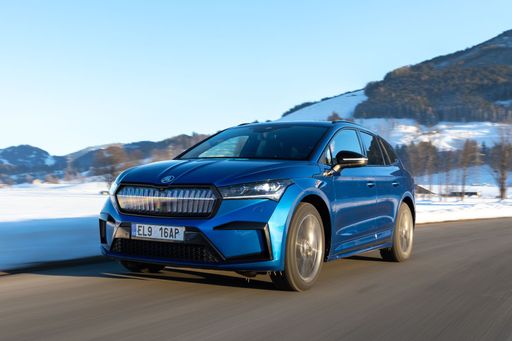
Skoda Enyaq
Skoda Enyaq
The Škoda Enyaq represents a bold step for the Czech manufacturer, embracing a stylish design and environmental consciousness with its electric powertrain. Inside, the cabin offers a blend of comfort and advanced technology, creating a modern driving experience. With its spacious interior and practical features, the Enyaq is perfect for families or anyone looking for a practical yet luxurious electric vehicle.
details @ skoda-media.de
@ skoda-media.de
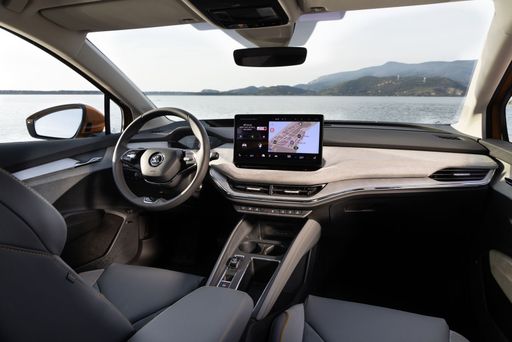 @ skoda-media.de
@ skoda-media.de
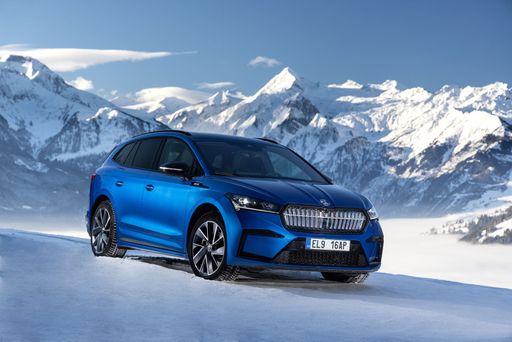 @ skoda-media.de
@ skoda-media.de
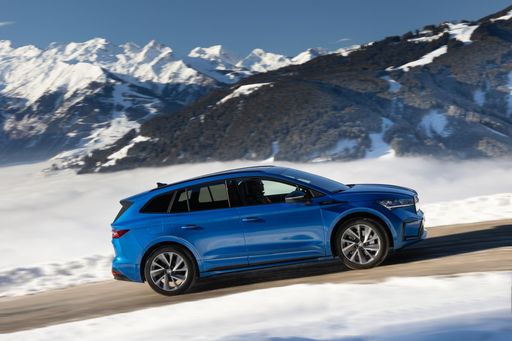 @ skoda-media.de
@ skoda-media.de
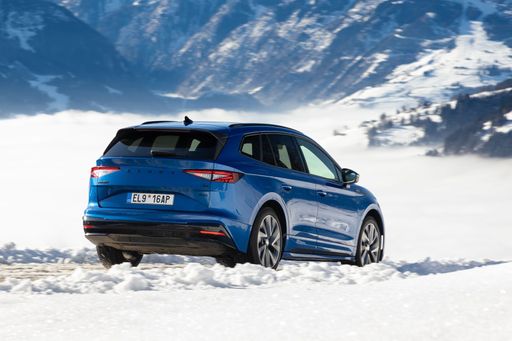 @ skoda-media.de
@ skoda-media.de
VW ID. Buzz Cargo
The VW ID. Buzz Transporter represents a bold leap into the future with its innovative electric design and retro-inspired aesthetic. Combining practicality with modern technology, it offers a spacious interior and advanced connectivity features ideal for both urban and long-distance journeys. This vehicle stands as a testament to Volkswagen's commitment to sustainability and forward-thinking mobility solutions.
details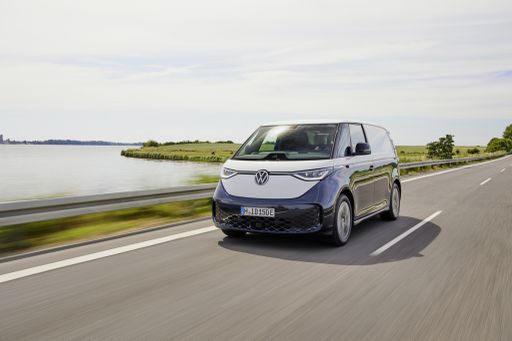 @ volkswagen-newsroom.com
@ volkswagen-newsroom.com
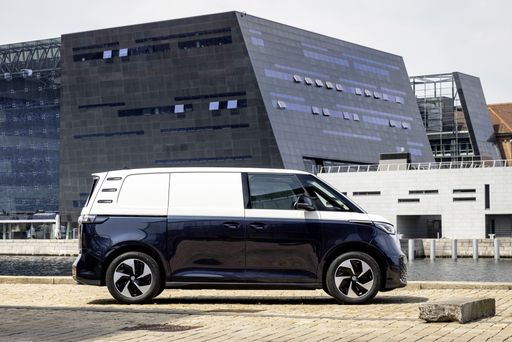 @ volkswagen-newsroom.com
@ volkswagen-newsroom.com
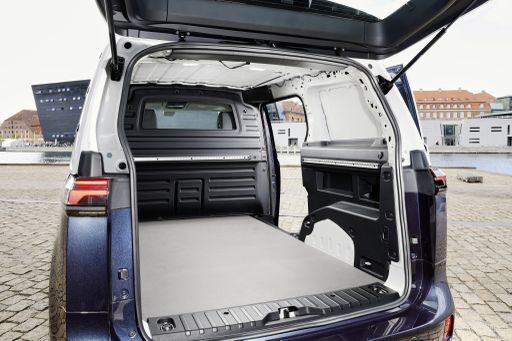 @ volkswagen-newsroom.com
@ volkswagen-newsroom.com

|

|
|
|
|
Costs and Consumption |
|
|---|---|
|
Price
38100 - 52200 £
|
Price
43600 - 51400 £
|
|
Consumption L/100km
-
|
Consumption L/100km
-
|
|
Consumption kWh/100km
14.8 - 16.2 kWh
|
Consumption kWh/100km
19.2 - 20.3 kWh
|
|
Electric Range
428 - 587 km
|
Electric Range
330 - 455 km
|
|
Battery Capacity
59 - 79 kWh
|
Battery Capacity
59 - 79 kWh
|
|
co2
0 g/km
|
co2
0 g/km
|
|
Fuel tank capacity
-
|
Fuel tank capacity
-
|
Dimensions and Body |
|
|---|---|
|
Body Type
SUV
|
Body Type
Cargo Van
|
|
Seats
5
|
Seats
3
|
|
Doors
5
|
Doors
4
|
|
Curb weight
2002 - 2293 kg
|
Curb weight
2264 - 2510 kg
|
|
Trunk capacity
570 - 585 L
|
Trunk capacity
-
|
|
Length
4658 - 4660 mm
|
Length
4712 mm
|
|
Width
1879 mm
|
Width
1985 mm
|
|
Height
1605 - 1625 mm
|
Height
1932 mm
|
|
Max trunk capacity
1610 - 1710 L
|
Max trunk capacity
3900 L
|
|
Payload
457 - 509 kg
|
Payload
640 - 753 kg
|
Engine and Performance |
|
|---|---|
|
Engine Type
Electric
|
Engine Type
Electric
|
|
Transmission
Automatic
|
Transmission
Automatic
|
|
Transmission Detail
Reduction Gearbox
|
Transmission Detail
-
|
|
Drive Type
Rear-Wheel Drive, All-Wheel Drive
|
Drive Type
Rear-Wheel Drive, All-Wheel Drive
|
|
Power HP
204 - 340 HP
|
Power HP
170 - 340 HP
|
|
Acceleration 0-100km/h
5.4 - 8.1 s
|
Acceleration 0-100km/h
-
|
|
Max Speed
160 - 180 km/h
|
Max Speed
145 - 160 km/h
|
|
Torque
310 - 679 Nm
|
Torque
310 - 679 Nm
|
|
Number of Cylinders
-
|
Number of Cylinders
-
|
|
Power kW
150 - 250 kW
|
Power kW
125 - 250 kW
|
|
Engine capacity
-
|
Engine capacity
-
|
General |
|
|---|---|
|
Model Year
2025
|
Model Year
2024
|
|
CO2 Efficiency Class
A
|
CO2 Efficiency Class
A
|
|
Brand
Skoda
|
Brand
VW
|
Is the Skoda Enyaq offered with different drivetrains?
The Skoda Enyaq is available as Rear-Wheel Drive or All-Wheel Drive.
The prices and data displayed are estimates based on German list prices and may vary by country. This information is not legally binding.
